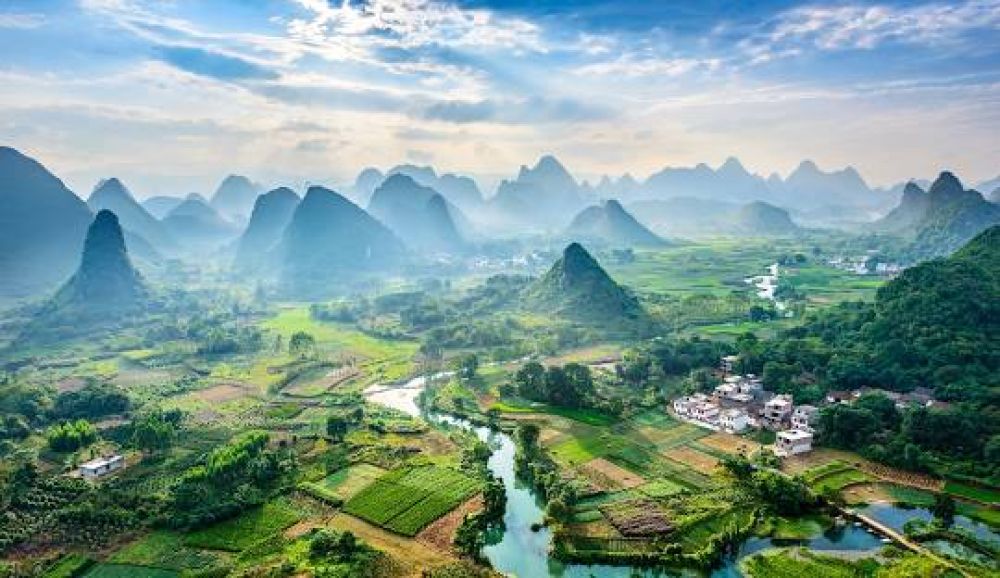

Guilin, a city in China's northeastern Guangxi Zhuang Autonomous Region, is renowned for its enchanting landscape. The breathtaking scenery has been celebrated for millennia, with its lush greenery, spectacular limestone karsts, and meandering rivers. Guilin's history as a tourist destination can trace its roots back to ancient times but it largely began to flourish in the modern era.
Originally, Guilin's natural beauty was the privilege of Chinese emperors and their courtiers. The city's name, which translates to "Forest of Sweet Osmanthus", hints at the intoxicating fragrance that must have beguiled visitors even in its early history. Poets and painters were captivated by Guilin’s extraordinary landscape, and so, through their works, the city's fame as a place of immense natural beauty began to spread far and wide.
Guilin's modern tourism industry took shape largely in the 20th century. The construction of railways and airports in the area made travel to Guilin more accessible for both domestic and international visitors. In the 1940s, Guilin became somewhat of a safe haven for Chinese scholars, artists, and government officials during World War II. Their presence in the city drew more attention to Guilin's potential as a tourism hotspot.
After the founding of The People's Republic of China in 1949, Guilin was among the first batch of cities opened to foreigners in the 1970s. The government began to realize the potential economic benefits of tourism and started to actively promote Guilin as a destination. By the 1980s and 1990s, Guilin had become a must-visit location, with images of its landscapes becoming synonymous with Chinese natural beauty in travelogues and promotional materials worldwide.
In the 21st century, Guilin continues to be a top draw for tourists seeking the legendary "finest scenery under heaven." The city has adapted to the growing environmental consciousness by focusing on sustainable tourism practices. Efforts have been made to ensure that the natural assets, which are Guilin's primary attractions, are preserved for future generations. In recent years, Guilin has enhanced its tourism infrastructure, with improved transportation networks and more significant investment in hospitality services.
The latest trends in Guilin tourism include experiential and adventure travel. Visitors are looking for authentic encounters with local culture, cuisine, and traditions. However, like much of the world, Guilin's tourism industry has been impacted by the COVID-19 pandemic, which brought about travel restrictions and a downturn in international visitors. Nonetheless, as travel resumes, Guilin is expected to bounce back, perhaps with a heightened emphasis on health and safety protocols.
With its long history as a beacon of natural wonder, Guilin's tourism sector continues to evolve, integrating the latest in hospitality trends while maintaining the timeless appeal of its stunning landscapes. Guilin remains an enduring emblem of China's rich cultural and natural heritage, inviting travelers from all over the world to explore its wonders.